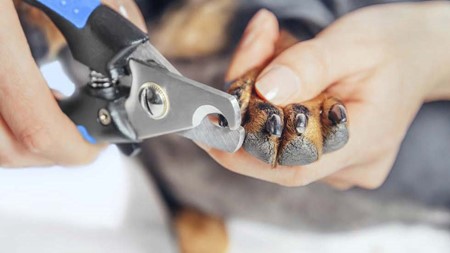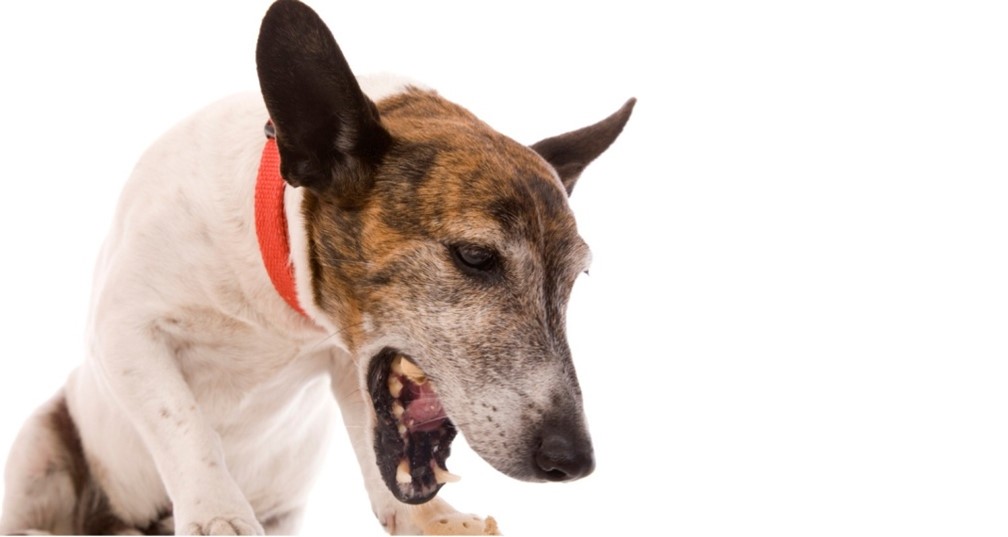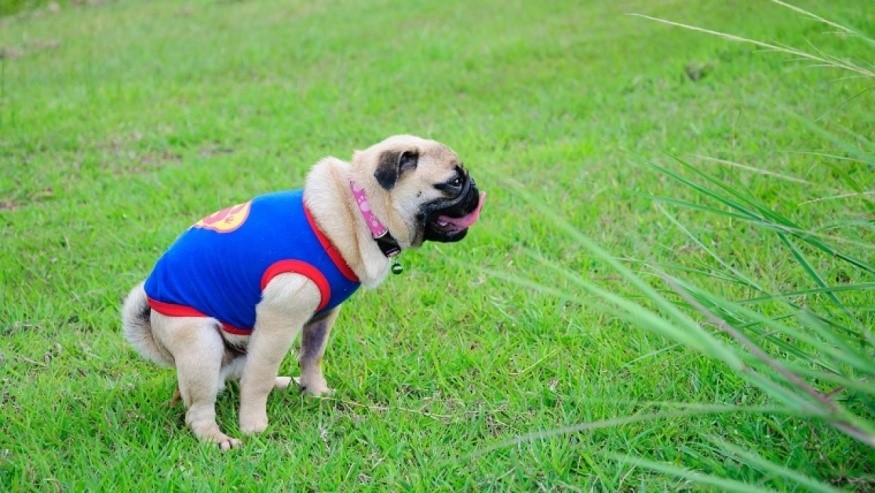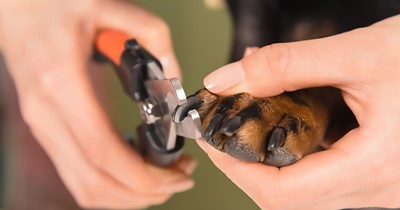Dogs are busy creatures with strong paws that can tolerate minor scratches and wounds. However, if you believe your dog has a more significant paw condition, you should visit any websites. As there are many websites which provide best Dog Supplies Online.
The following are some of the most frequent forms of paw issues that dogs encounter:
1. Allergy are the most common cause of paw pad problems and injuries in dogs:
Pets, like people, can be allergic to a variety of things. Pets with allergies will be itchy, especially in their paws, and will bite, lick, or chew on them to relieve the irritation. Unfortunately, they are also more prone to persistent ear, skin, and anal gland infections. In addition, excessive licking can cause discomfort or damage in rare circumstances and make the paw more vulnerable to subsequent fungal and bacterial infections. Therefore, a veterinarian should examine pets that lick their paws excessively to rule out allergies.

2. Infections caused by fungi and bacteria:
Many bacteria and fungus regularly reside on your pet’s paw pads, but these organisms can occasionally grow out of control and cause illness. In addition, bacterial and fungal skin infections are prevalent in dogs, and they frequently affect the paws.
- Licking and biting the paws and redness. Can identify paw infections. Itching, redness, a greasy discharge, and occasionally dark discoloration of the nails are common skin symptoms between the toes and other skin folds.
- Allergies can also cause these infections. Your veterinarian is the best person to detect an illness in your dogs and may prescribe several therapies to treat them, including topical creams, wipes, and washes.
Problems with the nails:
- Long Toenails: Long toenails are prevalent in dogs and can have a variety of harmful implications. Long nails might make walking your dog more challenging. When a dog’s nails come into touch with hard ground, the hard surface pulls the nail back up into the nail bed, causing discomfort and putting strain on all of the toe joints. Long nails also increase your dog’s chances of getting a cracked or torn nail.
- Ingrown Toenails: Nails that are not properly clipped or naturally worn down by going outside can develop into painful ingrown toenails.
- Torn Nails: Torn or broken nails develop when your dog’s toe snags on anything. A frequent occurrence is when a dog comes in from outside, limping and occasionally bleeding, and a damaged nail is discovered upon closer investigation. Torn and broken nails may be extremely painful and frequently bleed. Therefore they should be treated by a veterinarian.
– a person who trims a dog’s nails
– Almar Creative / the Spruce
– 3 Paw Pads that are dry and cracked
#Tip: Pets’ paw pads are meant to be rough for them to get a grip on smooth surfaces. However, several reasons, including hot pavement, cold weather, chemicals, dry air, exposure to rough surfaces, and excessive licking, can result in dry, cracked paw pads. Dry and cracked paws are uncomfortable and can lead to illness in your cat.
Burns:
Humans frequently forget that their pets are just as susceptible to burns as we are. Walking your dog on scorching sidewalks or streets can quickly result in severe burns on his paws. Don’t put off treating your dog’s burnt paw. Instead, contact your veterinarian straight away. Your dog may require immediate care to avoid additional injury.
- Tick and mites are pests. Most dog owners know pests, but they can be difficult to detect if they have taken up home in your dog’s paws. Please do not try to eliminate anything, ticks from your dog’s paw on your own. Has it been completed safely by a professional? Mites are invisible to the naked eye.
- If you see any of the symptoms of a mite infestation, such as continuous scratching, lost hair, or sores, takes your dog to the doctor to be examined.

Heartworm Symptoms in Your Dog:
Heartworms are a severe health concern for dogs and must be treated immediately. Being aware of heartworm signs and acting as soon as possible if you see them might save your dog’s life. Seek veterinarian treatment if you see any of these symptoms. Because heartworm illness worsens with time, getting your pet examined for an accurate diagnosis sooner rather than later is best.
#1- Cough:
Heartworm illness may not create any symptoms in its early stages. However, a slight cough may be one of the initial symptoms as the disease advances. Although the cough may not appear to be a concern at first, it will remain and worsen as the disease develops. Getting your dog to the doctor at this point may help prevent life-threatening consequences, so keep an eye out for a persistent, bothersome cough in your dog.
#2- Intolerance to Exercise:
Heartworms commonly lead dogs to become exercise-intolerant. You may notice that your once energetic dog slows down on walks or no longer runs to the door when you grab the leash. In more extreme situations, your dog’s aversion to activity may become drastic, forcing them to discontinue nearly all activities. When your dog attempts to be active, this exercise intolerance is likely to be accompanied by respiratory issues. A veterinarian should always evaluate these symptoms.
#3- Urine with Blood:
Bloody or darkly colored urine, combined with pale gums and difficult breathing, suggests caval syndrome, a severe consequence of heartworm illness. Caval syndrome occurs when heartworms obstruct blood flow in the heart, resulting in cardiac collapse. Therefore, it is critical to get emergency care at your veterinarian’s office to remove the blockage and restore appropriate blood flow. Failure to do so may end in death.

Prevention and Care for Dog Paws:
1. Pedicures for your dog:
- When your dog’s nails grow long enough to touch the ground when walking, you should clip them. The frequency with which you should clip your dog’s nails varies greatly depending on the breed—some breeds may not require any trimming at all.
- Nail clipping should be a relaxing and stress-free experience for both you and your dog. It may be simpler to trim your dog’s nails if they are used to having their feet rubbed. You may also teach your dog to use scratchboard to file their nails. When your dog shows indications of worry or anxiety, avoid holding them down or clipping their nails since, like people, they remember, and this will make it more difficult or impossible in the future. There are numerous wonderful resources available to help you and your dog like Dog Paw Cream which make nail clipping less painful.
2. Think about the weather:
It is critical to avoid walking your dog on scorching concrete or sand throughout the summer. Rock salt and chemical ice melt can injure your dog’s paws and be eaten by your dog when it licks its paws in the winter. Avoid these items, and after walks, wash your dog’s paws with warm water to remove chemicals and salt, and apply Dog Paw Balms to prevent dry and cracked paws. Do not use human lotions or moisturizers on your dog; instead, use Dog Paw Lotion or see your veterinarian for a canine moisturizer.

3. Perform Paw Checks:
Paw inspections are essential, especially after playing outside or engaging in intense activities since these are the most probable periods for injuries to occur. It’s also the most probable time for your dog to acquire something trapped in their pad or between their toes. Examine the area for any debris and keep an eye out for injuries or blisters.
